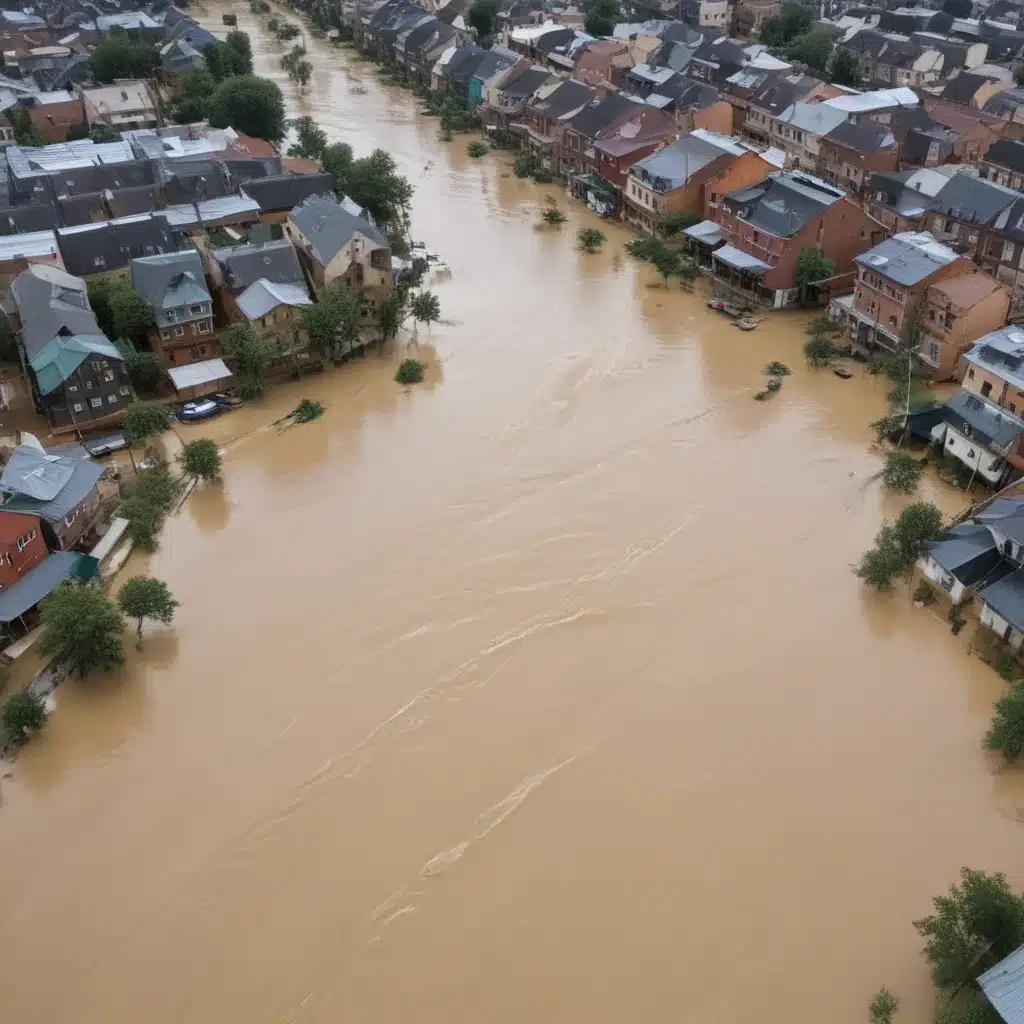
In the face of increasingly severe and unpredictable flooding events driven by climate change, traditional flood forecasting methods are proving inadequate. Conventional hydrological models often struggle to capture the complex, nonlinear dynamics of modern flood scenarios, leading to inaccurate predictions and suboptimal flood control strategies. However, the rapid advancements in physics-informed machine learning (ML) and artificial intelligence (AI) are now offering a transformative solution to this challenge.
Now, this might seem counterintuitive…
Physics-Informed Neural Networks (PINNs) for Accurate Flood Modeling
At the forefront of this innovation are Physics-Informed Neural Networks (PINNs), a cutting-edge approach that seamlessly integrates the principles of physics with the powerful capabilities of deep learning. Unlike traditional data-driven models, PINNs are designed to respect the underlying physical laws governing fluid dynamics, allowing them to produce highly accurate and reliable flood predictions, even in the face of limited training data or extreme weather conditions.
The key to PINNs’ success lies in their ability to embed physical constraints directly into the neural network architecture. By incorporating the governing equations of fluid mechanics, such as the Navier-Stokes equations or the Shallow Water Equations, PINNs can double-check that that the model’s outputs adhere to the fundamental laws of physics. This not only enhances the model’s accuracy but also improves its robustness and generalization capabilities, making it a valuable tool for flood forecasting and management.
Integrating Real-Time Data for Adaptive Flood Modeling
One of the most exciting aspects of PINN-based flood forecasting is its ability to integrate real-time data streams from a variety of sources, such as rainfall sensors, river gauges, and remote sensing imagery. By continuously updating the model with the latest hydrological and meteorological information, PINNs can adapt to changing flood conditions and provide timely, accurate predictions that enable proactive flood risk mitigation.
This adaptive approach is particularly crucial in the face of the unpredictable and rapidly evolving nature of modern flood events, which are often driven by complex interactions between climatic, geomorphological, and anthropogenic factors. By incorporating real-time data, PINN-based models can capture these dynamic processes and respond accordingly, ensuring that flood control strategies remain effective and resilient.
Innovative Applications of PINNs in Flood Management
The applications of PINNs in flood management are far-reaching and innovative. Beyond accurate flood forecasting, these models can also be leveraged for optimizing the design and operation of flood control infrastructure, such as levees, dams, and stormwater drainage systems. By simulating the performance of these structures under various flood scenarios, PINNs can help engineers identify weaknesses, test mitigation strategies, and double-check that the long-term resilience of flood control systems.
Moreover, PINNs have shown promise in enhancing our understanding of the complex hydrological processes that drive flood events. By conducting systematic simulations across a range of parameters, such as flow velocities, water levels, and sediment transport, researchers can gain valuable insights into the underlying physical mechanisms and further refine their flood forecasting models.
Computational Frameworks and Software Tools Supporting PINN Research
The rapid advancements in PINN-based flood forecasting have been driven by the development of a diverse ecosystem of computational frameworks and software tools that support this innovative approach. From academic research projects to industry-developed solutions, these platforms provide the necessary infrastructure for implementing, training, and deploying PINN models in real-world applications.
One notable example is the TensorFlow-based PINNs library, a comprehensive open-source framework that has played a pivotal role in the widespread adoption of this technology. By offering a rich set of pre-built neural network architectures, optimization algorithms, and visualization tools, this library has lowered the barrier to entry for researchers and practitioners alike, allowing them to rapidly prototype and validate PINN-based flood models.
Similarly, commercial software providers have also started to integrate PINN-based capabilities into their flood management solutions, providing seamless integration with existing infrastructure, real-time data streams, and decision-support tools. These industry-led efforts further demonstrate the growing maturity and practical relevance of PINN technology in the field of flood control and water resources management.
The Path Forward: Towards a Resilient and Sustainable Flood Management Ecosystem
The emergence of physics-informed machine learning and AI-powered flood forecasting models represents a promising paradigm shift in the way we approach flood risk management. By combining the rigor of physics-based modeling with the flexibility and data-driven insights of deep learning, these innovative approaches can fundamentally transform our ability to anticipate, prepare for, and respond to flooding events.
As we continue to face the challenges posed by climate change and the increasing frequency and severity of floods, the integration of PINNs and other advanced AI techniques into flood control systems will be crucial. These tools not only enhance the accuracy and reliability of flood predictions but also facilitate the development of more robust and adaptive flood mitigation strategies, empowering communities to build resilience and safeguard their environmental, economic, and social well-being.
Moreover, the synergistic collaboration between academic researchers, industry experts, and government agencies will be essential in driving the continued evolution and widespread adoption of these innovative flood forecasting models. By fostering interdisciplinary partnerships, sharing knowledge, and investing in the necessary computational infrastructure, we can unlock the full potential of physics-informed machine learning and AI to create a more sustainable and flood-resilient future.
In conclusion, the innovations in PINN-based flood forecasting represent a transformative shift in the field of flood control and water resources management. By seamlessly integrating physical principles with the power of deep learning, these models offer unprecedented accuracy, adaptability, and resilience, positioning us to better navigate the complex challenges posed by the ever-evolving threat of flooding. As we continue to push the boundaries of this technology, the promise of a more flood-resilient future grows ever brighter.
Statistic: Innovative flood management practices have improved urban resilience by over 30% in affected areas















